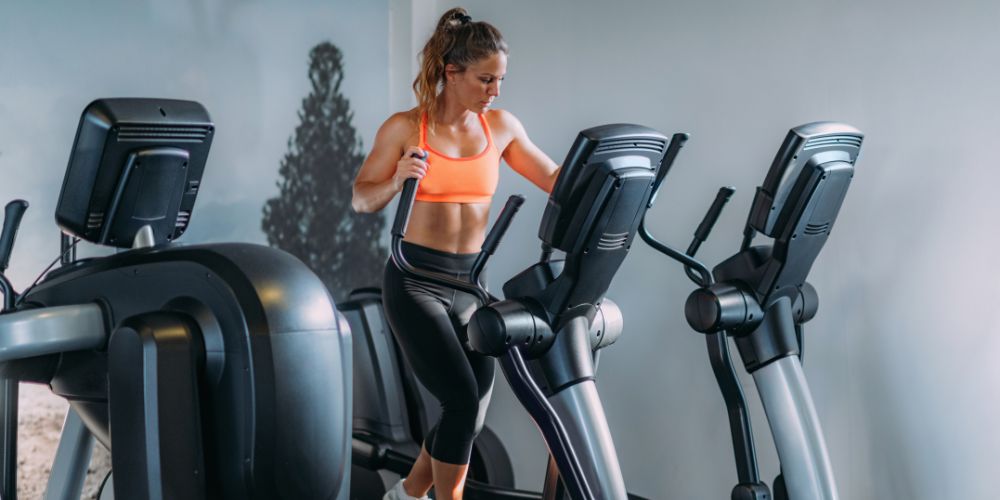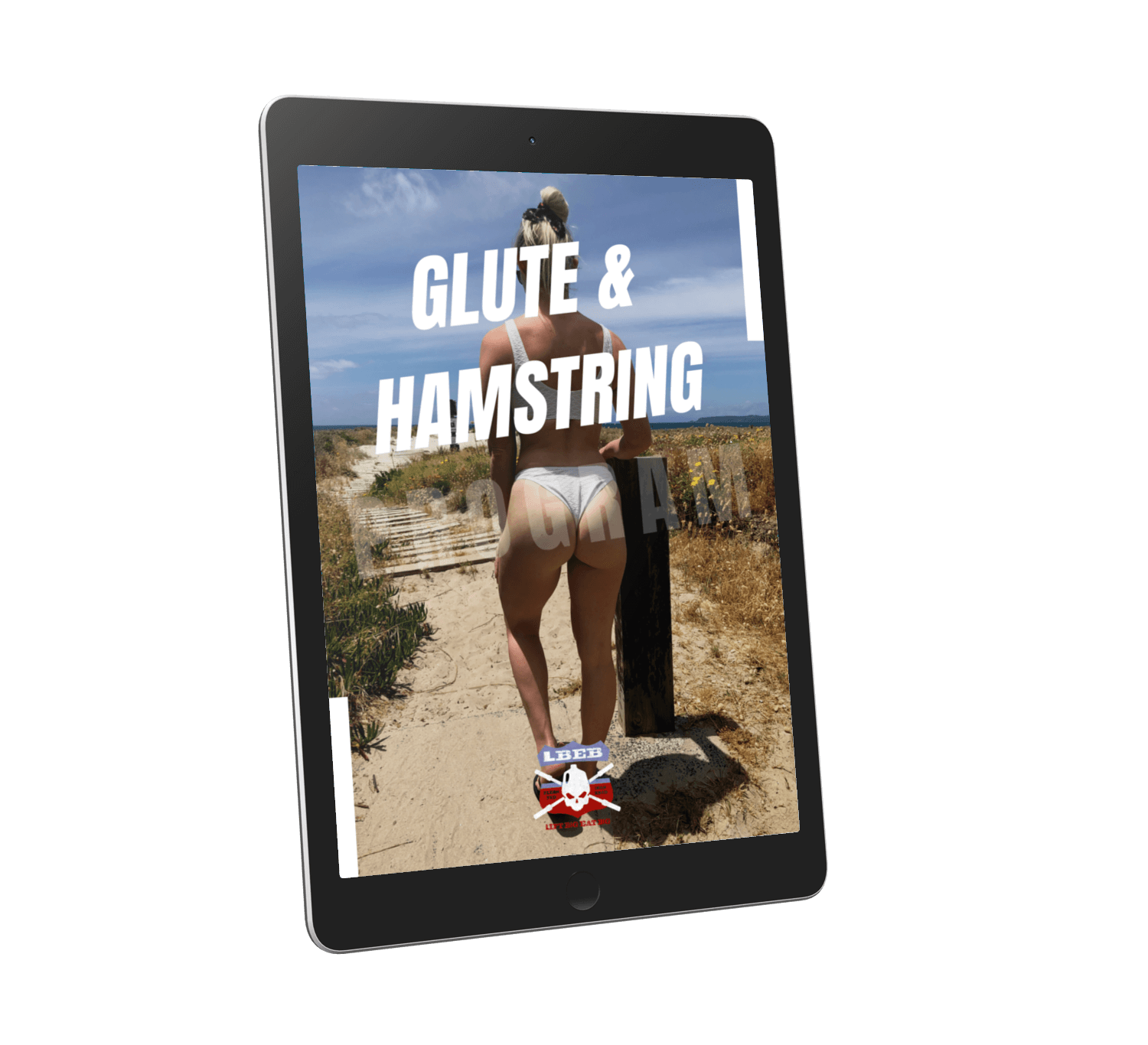If you’ve been slaving away on the elliptical on the quest to grow a bigger backside to no avail, here’s why.
The elliptical works the glutes but not to the extent of building muscle. It will not give you “firm and toned” glutes, as the elliptical doesn’t stimulate a muscle-building response.
But I’m sure you feel your glutes burn when running on the elliptical. Isn’t that enough to work your glutes?
Table of Contents
Does Elliptical Work Glutes?
The elliptical works all the muscles in the legs – quads, hamstrings, calves, and glutes. Does this mean you’ll grow a bigger, firmer butt from running on the elliptical? Unfortunately not. Gaining muscle requires high levels of mechanical tension and metabolic stress [1].
Meaning you need to lift heavy weights through a full range of motion or light weights through a full range of motion closer to failure [2]. Associated with this is metabolic stress, which is the “burning” sensation you get during the last few reps of a challenging exercise set.
This burning sensation is the build-up of by-products from energy production, stimulating muscle growth but negatively affecting force production [3]. These mechanisms together maximize the muscle growth response.
The elliptical doesn’t increase the mechanical tension on the glutes because:
- The range of motion is too short.
- There is no eccentric contraction which is vital for muscle growth.
- The tension is too low to stimulate hypertrophy.
We can dive deeper and look at molecular signaling from exercise to further drive home the point that spending hours on the elliptical won’t do anything for your glutes.
The AMPK pathway, in layman’s terms, is the molecular pathway activated during and after endurance training resulting in improved cardiovascular fitness [4]. The pathway we want to activate to build muscle is the mTOR pathway which, in layman’s terms, is the muscle-building pathway.
Unfortunately, stimulating the AMPK pathway and other molecular processes with cardio inhibits the signaling of the mTOR pathway [4][5].
This lasts up to 3 hours before returning to baseline, and the strength of the signal to the endurance pathway depends on the cardio exercise’s volume and intensity. That means the longer the duration and the higher the intensity, the greater activation of AMPK.

This is why the elliptical does not build muscle or your glutes. However, if you are a complete beginner to exercise, anything will build muscle initially but it won’t last long [6].
Is Treadmill Or Elliptical Better For Glutes?

Neither is better for building your glutes. In fact, both are horrible options if a bigger butt is your priority. One could argue that sprinting on a treadmill is a good exercise for the glutes, especially as sprinters typically have round butts.
However, if you are not a sprinter but are a regular gym bunny that works full time, sprinting on a treadmill is likely to leave you with injuries.
Further, you likely won’t be able to sprint fast enough for there to be any muscle-building response. And finally, maximal sprinting on a treadmill can be dangerous if you’re not well-versed in sprinting.
What To Do Instead To Build Big Glutes?
The problem I see with many people who want big glutes but aren’t getting them is they do too much cardio and not enough strenuous weight lifting. The secret for butt building is to reverse this.
Spend more time lifting and less time as a cardio bunny. Perform a mixture of heavy exercises that focus on hip extension, like the Romanian Deadlift, Hip Thrust, and deep Squats, with a variety of light exercises, like Lunges and Kickbacks.
I’ve detailed a complete guide to getting a bigger butt here that describes exactly what to do, including a training program.
Summary
The elliptical should not be your first (or any) choice when wanting to build your glutes. While the elliptical works your glutes, the “firm, toned” look you aspire to isn’t developed through hours of cardio. It’s built from lifting consistently and building muscle.
References
1. Schoenfeld, B. J. (2010). The mechanisms of muscle hypertrophy and their application to resistance training. The Journal of Strength & Conditioning Research, 24(10), 2857-2872.
2. Schoenfeld, B. J., Grgic, J., Van Every, D. W., & Plotkin, D. L. (2021). Loading recommendations for muscle strength, hypertrophy, and local endurance: a re-examination of the repetition continuum. Sports, 9(2), 32.
3. Schoenfeld, B. J. (2013). Potential mechanisms for a role of metabolic stress in hypertrophic adaptations to resistance training. Sports medicine, 43(3), 179-194.
4. Methenitis, S. (2018). A brief review on concurrent training: from laboratory to the field. Sports, 6(4), 127.
5. Baar, K. (2014). Using molecular biology to maximize concurrent training. Sports Medicine, 44(2), 117-125
6. Methenitis, S. (2018). A brief review on concurrent training: from laboratory to the field. Sports, 6(4), 127.

